
Broke.
Homeless.
And in danger of losing custody of her children.
That’s where Bonnie Roy found herself while trying to get a divorce in Minnesota 10 years ago.
Because of her own experience and the stories she’s heard, Roy has dedicated herself to positive change in the laws around family court that prioritize the safety and well-being of children.
She’s attended the New York Battered Women’s Custody Conference, and events by the Center for Judicial Excellence and Protective Mothers Alliance International. She’s worked to bring well-known domestic violence advocates Barry Goldstein, who authored the Safe Child Act as well as “The Quincy Solution,” and Lundy Bancroft, who authored “Why Does He Do That: Inside the Minds of Angry and Controlling Men” to Minnesota to provide trainings to therapists and other family court professionals.
And she’s worked hard to counter this statement made by so many: Well, she must have done something wrong to lose custody.
Of the moms she knows who lost legal custody and got reduced parenting time, none had criminal convictions or had been in criminal court. There was no determination of negligence or endangerment. “They hardly had a speeding ticket,” said Roy.
“People just assume lawmakers and judges are looking out for children – and they’re not.
“The public needs to get informed.”
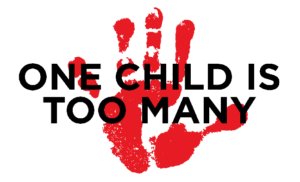
Evidence ignored as ’heresay’
What is the contributing factor to women losing custody? Not being heard on the evidence they have, according to Roy.
She pointed to cases like that of her friend, Leigh Ann Olson Block, whose evidence of domestic violence was ignored by the Ramsey County Family Court. Having been given joint legal custody and over 50% of the parenting time, Highland High School graduate John Tester murdered their daughter Mikayla the weekend before she would have started kindergarten in September 2004.
This isn’t an isolated case. Since 2008, the Center for Judicial Excellence has identified 748 children who were murdered by a divorcing or separating parent. Amon![]() g those are 11-year-old William and 8-year-old Nelson Schladetzky, who, along with their mother, Kjersten, were murdered by their father and Whittier International Elementary School PTO president David last November in South Minneapolis.
g those are 11-year-old William and 8-year-old Nelson Schladetzky, who, along with their mother, Kjersten, were murdered by their father and Whittier International Elementary School PTO president David last November in South Minneapolis.
Once you step into family court, evidence that would be heard in a criminal court gets thrown out, said Roy, who has talked to many women in Minnesota over the years about their experiences in family court. The evidence is labeled “heresay.” Women are labeled as having made “false allegations” and in some cases children are taken away because they’re seen as “alienators” and accused to trying to alienate children from their fathers, a theory that is not supported by research, she observed. Women are even punished for cooperating with child protection investigations.
Minnesota courts are taking children away from their primary caretakers without a determination of neglect or endangerment. You can’t do this in criminal court, but it happens in family court, pointed out Roy.
This is a widespread problem, one that researcher Joan Meiers and team from Georgetown University studied in depth, pointed out Roy. After looking at more than 2,000 custody case appeals involving child abuse, domestic violence and parental alienation nationwide, researchers found that women are losing custody when they bring up domestic violence. When a woman states there was domestic violence in the home (against her, the children or both) and the man counters by claiming she is alienating the kids from him, she loses custody 44% of the time. When claims of sexual abuse is involved, the mother loses custody 81% of the time.
In family court today, claims of abuse by mothers are only believed 23% of the time when alienation is claimed by the father.
This was the case for Block, whose evidence of stalking, abuse and more that was downplayed and ignored in family court. (Read past article on Block online here)
Block was told: “‘You need to stop pushing his buttons.’
“His buttons? He was trying to kill us,” said Block.
A woman may have an order for protection in place against her abuser, but she’s still instructed by the family court to engage in co-parenting in a joint custody situation. “They don’t factor that in,” said Roy. “It is shocking to most people.”
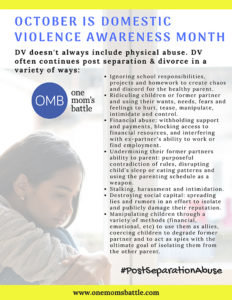
Current law doesn’t make child safety the priority
Minnesota Statute 518.17 lists 13 factors to be evaluated during custody cases. The statute states that the court should consider the best interests of the child and should not prefer one parent over the other, and one factor deals specifically with domestic abuse. But Roy and Block have seen too many cases where domestic violence isn’t factored into a judge or referee’s decision on a custody case.
Because of that, they’re working to replace this language with the Safe Child Act.
“There is no current law that says safety of the child has to be taken first,” said Roy.
“We’re trying to make children’s safety a priority in family court by passing the Safe Child Act,” stated Block.
The Minnesota bill needs a sponsor.
“It’s not a father’s rights issue or a mother’s rights issue,” said Block. “It’s a people’s issue.”
“The issue is children not being heard,” said Roy.
‘No sense to this’
“Abusive fathers are more likely to get custody of their children than mothers,” said Roy. “In law and logic - there’s no sense to this.”
In some of the families, a Guardian Ad Litem had been assigned to the case. The guardian is supposed to assess a child’s situation and then make recommendations to the court about a child’s best interest.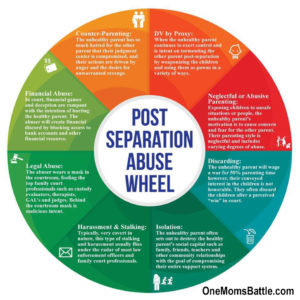
However, a 2018 report by the Minnesota Office of the Legislative Auditor found that they are failing children. “There are no training standards,” pointed out Roy. “The training they have is a minimal baseline. Those who lack relevant professional education are making critical decisions that create horrific outcomes.”
The results of the audit didn’t surprise Roy or Block, who have heard story after story of how guardians without training in psychology or domestic violence ignore abuse when a mother or child brings it up. Instead, they’re told they need to get along with the father and co-parent.
“You can’t co-parent with an abuser,” said Roy.
In many of these cases, mothers end up losing custody because the guardian made the determination that a mother bringing up issues of abuse meant she was making false allegations and/or engaged in parental alienation. Decisions are also being made based on the old research that children act out when there is abuse or that women made false claims of abuse to gain an advantage in custody court.
The Safe Child Act would address some of these issues by stipulating that a common intake form is used by all guardians, and that judges would also be educated on how to use the assessment tool. The SAFeR Approach has been developed by the Minneapolis-based Battered Women’s Justice Project, and helps practitioners screen for and understand the full nature, context and effects of abuse so that they can respond with safe and workable parenting arrangements. SAFeR can be used by attorneys, advocates, judicial officers, custody evaluators, guardians ad litem and survivors, and is implemented through the use of worksheets and practice guides.
“The bottom line is that when the Safe Child Act is passed, it will change the dynamics of family court,” said Roy. “It will force the court to look at the dynamics that haven’t been recognized and the abuse cases that are labeled high conflict.
“It’s accountability on everyone’s part.”
The act builds upon House Congressional Resolution 72, which says child safety is the first priority of custody and visitation adjudications, and that state courts should improve how they manages custody where family violence is alleged.
According to the Leadership Council on Child Abuse and Interpersonal Violence, an estimated 58,000 U.S. children a year are court-ordered into the unsafe custody or care of abusive parents, over the objections of caring parents.
Right now, too often, “the rights of the father outweigh the health and safety of the mother and child,” said Roy. She wishes the system would do away with the word “custody,” as it becomes a tool used by an abuser. “The abuser looks at it as a piece of property. They will spend a million dollars to get custody,” observed Roy.
“Why did the mother lose custody when all she did was try to protect the child and try to protect their life?”
The Safe Child Act would prioritize keeping the main caretaker the same, recognizing that this has been shown by the Adverse Childhood Experiences (ACE) studies to be better for kids.
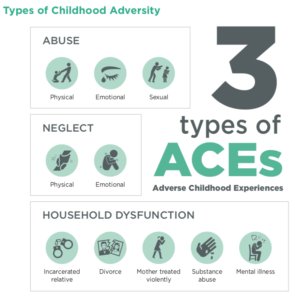
“One of the most important findings from the ACE Studies is that fear leading to stress rather than physical injuries cause most of the damage. The essence of domestic violence is that abusers use a variety of tactics to coerce, scare and intimidate the victim to do what the abuser wants. The fear that is engendered in both the mother and children causes a lifetime of health and other problems,” pointed out Barry Goldstein, who authored the Safe Child Act and wrote “The Quincy Solution: Stop Domestic Violence and Save $500 Billion.”
Researchers at the University of Michigan along with the National Institute of Justice looked at what happens when the alleged abuser wins custody and a safe, protective mother who is the primary attachment figure for the child, is limited to supervised or no visitation. “The Saunders’ study found that these decisions are always wrong because the harm of denying children a normal relationship with their primary attachment figure, a harm that includes increased risk of depression, low self-esteem and suicide, is greater than any benefit the court thought it was creating,” pointed out Goldstein. “One reason for the mistake is the courts rarely compare the known risk of separating children from their primary parent with the often-speculative risk they are using to justify the extreme decision.”
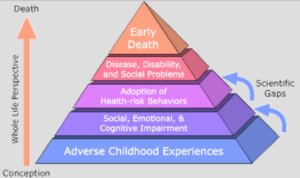
Fit mothers losing custody under the radar
“If a divorce was not contentious, you would be able to sit down and you wouldn’t have to go in front of a judge,” pointed out Roy.
Of the 3.8% of cases that require trial, a large majority (75-90%) are domestic violence cases involving the most dangerous abusers, according to Goldstein. “These are fathers who believe the mother has no right to leave so they are entitled to use any tactics necessary to regain what they believe is their entitlement to control their partners.”
He added, “Inadequately trained professionals often fail to recognize the danger because most of these fathers have not committed the most severe physical assaults. But these abusers are willing to hurt their children by taking them from mothers who are usually the primary attachment figures, abusing the children and in extreme cases killing them. Courts rarely look for patterns to help understand domestic violence, but in the last 10 years over 700 children involved in contested custody have been murdered, mostly by abusive fathers.”
Men who abuse women are 40-60% more likely to abuse children physically and sexually, and domestic violence makes child neglect more likely, pointed out Goldstein.
Because the Saunders’ study found that the standard and required training in domestic violence obtained by evaluators, judges, lawyers and guardians ad litem do not qualify them to respond effectively to domestic abuse allegations, the Safe Child Act would require specific training.
It would also requires the use of current scientific research to inform court decisions, instead of the personal beliefs, biases and invalid theories used instead. The idea that a woman makes false allegations of abuse in family court leads to judges imposing punishments and retaliation against the mother – not recognizing the court is punishing the children, pointed out Roy.
“A fit mother is losing custody to an abuser,” said Roy. “That’s the part that is going under the radar.”
PROBLEMS WITH GUARDIANS AD LITEM IN MINNESOTA
DEFINE IT
Each year, thousands of children in Minnesota are involved in court cases related to abuse, neglect, custody, and other matters. In some of these cases, the courts appoint a guardian ad litem to help ensure the child’s needs are not overlooked during the court process. Guardians ad litem assess a child’s situation and make recommendations to the court about a child’s best interests.
What does it take to be a GAL?
- 40 hours of training and and a bachelor degree (field is not specified)
- Training in child psychology, Cluster B personality disorders, or domestic violence is not required.
Key findings of 2018 legislative audit:
- The GAL program has not had sufficient oversight.
- Not all are complying with required training.
- It has established few standards to ensure guardians ad litem provide high-quality services statewide.
- The program needs greater financial oversight and regular reviews.
READ IT YOURSELF
GUARDIAN AD LITEM AUDIT
https://www.leg.mn.gov/docs/2018/other/180389.pdf

Read more in our Voices Against Violence series here.
• "I RAN'
• She must have done something wrong
• Assume mothers get custody of the kids in domestic abuse situations? Think again.
Comments
No comments on this item Please log in to comment by clicking here